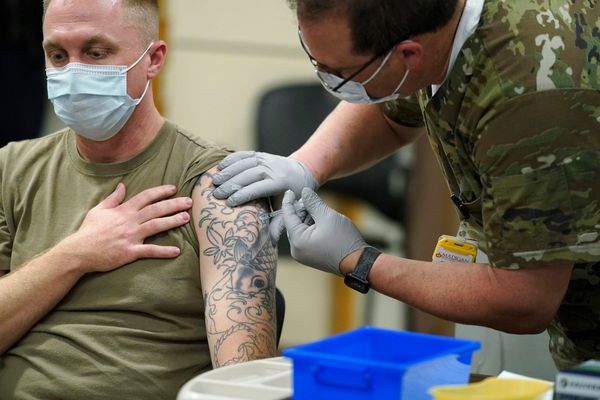
Renowned actor Bruce Willis was diagnosed with frontotemporal dementia, or FTD, according to a statement from his family on Thursday.
“Unfortunately, challenges with communication are just one symptom of the disease Bruce faces,” the family writes. “While this is painful, it is a relief to finally have a clear diagnosis.”
In the spring of 2022, the 67-year-old “Die Hard” and “Pulp Fiction” actor was diagnosed with aphasia, a disorder defined by disruption in language and difficulty understanding, Dr. Jasdeep Hundal, director of medical psychology and neuropsychology for the southern region of the Hackensack Meridian Medical Group, tells Fortune. Stroke and head trauma can cause aphasia, but it can also signal the onset of neurodegenerative diseases like dementia, he says.
The aphasia diagnosis led Willis to announce his retirement from acting, and it has since progressed.
“FTD is a cruel disease that many of us have never heard of and can strike anyone,” the family wrote. Frontotemporal dementia (FTD) happens when cells in the front and temporal sides of the brain die, leading to speech and language challenges.
“The neurons are dying off,” Hundal says. “The brain is actually shrinking.”
FTD is the most common form of dementia for people under 60, according to The Association for Frontotemporal Degeneration. Beyond difficulty communicating, the condition can lead to "behavioral, personality, or movement" changes, the association says. Hundal says it’s important for people to know the signs and symptoms of FTD, as it is more prevalent in younger groups.
“When we hear dementia, we generally start thinking of Alzheimer’s,” he says, noting that the early signs of frontotemporal dementia can instead be subtle and language-based.
What are the symptoms of frontotemporal dementia?
FTD is degenerative, meaning symptoms become more pronounced as the disease progresses. It can be challenging to decipher the symptoms of FTD, given that they can mirror other degenerative diseases, according to the National Institute on Aging.
There are also different types of FTD, including behavioral FTD (bvFTD), and primary progressive aphasia (PPA).
“Symptoms of FTD are often misunderstood. Family members and friends may think that a person is misbehaving, leading to anger and conflict,” according to the National Institute on Aging. “It is important to understand that people with these disorders cannot control their behaviors and other symptoms and lack any awareness of their illness.”
Symptoms of behavioral variant frontotemporal dementia include:
- problems planning and prioritizing tasks
- repeating the same things
- acting impulsively
- becoming more disinterested in things they care about
“Somebody may start acting out of character in social settings,” Hundal says.
Symptoms of primary progressive Aphasia (PPA) include:
- difficulty speaking, reading, writing, and understanding.
“You're going to have trouble speaking clearly, or your dictionary in your head starts shrinking,” Hundal says. “You start actually losing the meaning of words or you may have trouble coming up with the right word in conversation.”
As this type of FTD progresses, behavioral changes may also be more noticeable.
“Problems with memory, reasoning, and judgment are not apparent at first but can develop over time,” the National Institute on Aging says.
Given Willis’ previous diagnosis of aphasia, Hundal speculates he falls in the primary progressive aphasia category of FDT.
“Without knowing his entire history, given the limited information that I have, my first thought is this is probably a PPA,” he says.
How do you get diagnosed with frontotemporal dementia?
Most FTD cases present between ages 45 and 64, and symptoms vary by the person, which can lead the condition to be misdiagnosed as a mood disorder. Willis’ family aims to shed light on the need for further research and awareness into this type of dementia, so family members can understand that behavioral changes are typical in these cases.
Seeking out a primary care doctor when these symptoms present, followed by a visit to a behavioral neurology clinic, can help diagnose dementia using brain scans that can examine if the brain is indeed shrinking in certain areas.
What is the prognosis for frontotemporal dementia?
The condition does not have a cure, and people can live anywhere from less than two years to over 10 years following diagnosis, according to the National Institute on Aging. No medication is available, Hundal says, but identifying symptoms present can allow for other behavioral interventions like speech and language therapy or mental health care if needed.
“Bruce has always found joy in life—and has helped everyone he knows to do the same. It has meant the world to see that sense of care echoed back to him and to all of us,” the family writes. “We have been so moved by the love you have all shared for our dear husband, father, and friend during this difficult time. Your continued compassion, understanding, and respect will enable us to help Bruce live as full a life as possible.”







